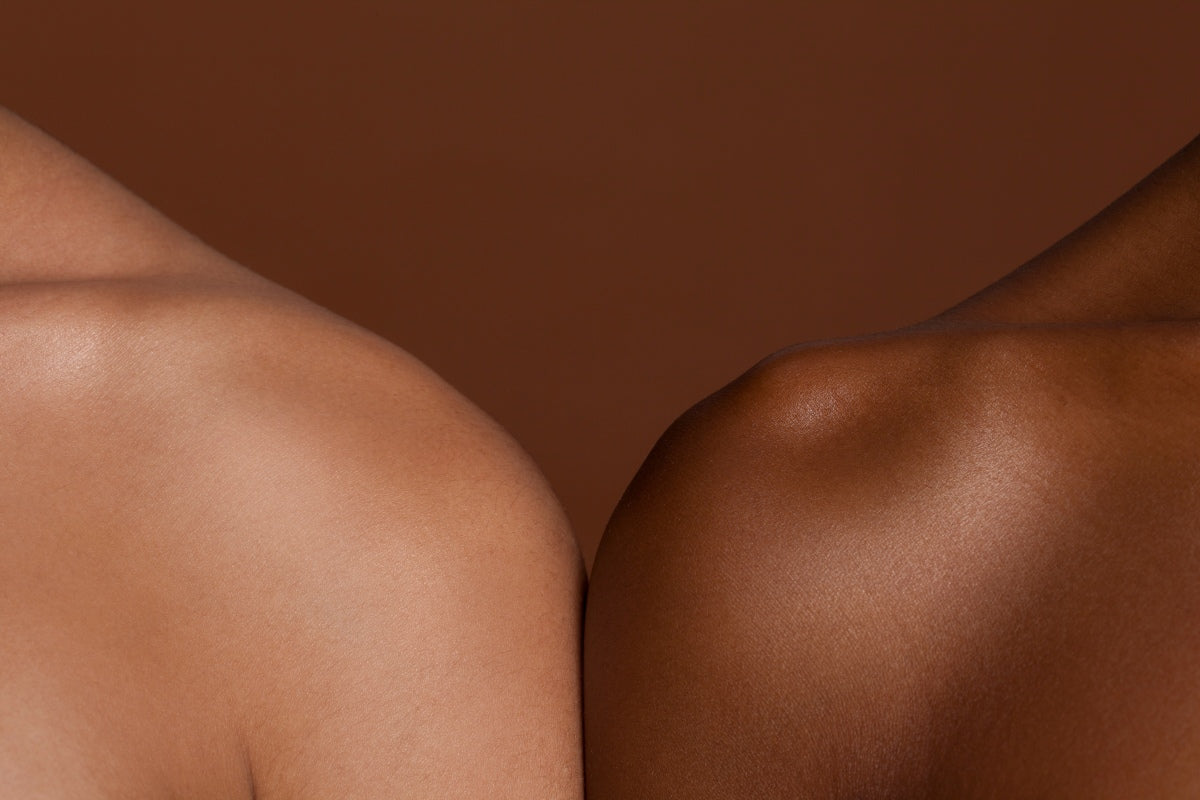Blog > All
How Deep Does Red Light Therapy Penetrate?
Written by Our Editorial Team
6 min read
00
DAYS D00
HOURS H00
MINUTES M00
SECONDS S

How deep does red light therapy penetrate? This is a question that often arises for people exploring LED treatments.
The answer depends on the wavelength of light, the type of device, and the skin's natural properties.
Unlike topical skincare, which primarily works on the outermost layer, light therapy interacts directly with living tissue, stimulating changes at varying depths.
By examining how different wavelengths travel beneath the surface and how devices deliver that energy, you can gain a deeper understanding of why red light therapy has become a trusted, non-invasive option for skin health and beyond.
What this article covers:
At its core, a wavelength is simply the distance between two peaks of a light wave, measured in nanometers (nm). Different wavelengths correspond to different colors of visible light and beyond.
For example, blue light has a shorter wavelength, while red and near-infrared light have longer wavelengths.
Light penetrates tissue according to its wavelength. Shorter wavelengths (such as blue light) stay closer to the skin's surface, while longer wavelengths (like near-infrared) reach deeper.
Red light therapy typically falls between 600–900 nm, a range that allows it to bypass the epidermis and interact with cells in the dermis and even subcutaneous tissue.
This matters because different skin goals require different depths. For instance, calming surface redness may need only shallow penetration, while stimulating collagen or circulation requires light to reach deeper into the dermis.
Dermatologists and engineers have long studied this principle, and Qure designs its LED mask in line with these findings.
The Q-Rejuvalight Pro red light mask is FDA-cleared and dermatologist-approved, ensuring that its wavelengths fall within the therapeutic ranges proven to penetrate safely and effectively.

Red light in the 600–700 nm range penetrates a few millimeters into the skin. It passes through the epidermis to reach the upper layers of the dermis, where fibroblast cells are located.
These are the cells responsible for collagen production, wound healing, and overall skin structure.
By stimulating mitochondria in fibroblasts, red light increases adenosine triphosphate (ATP) production, giving cells the energy they need to repair and regenerate.
This is why red light therapy is frequently used for concerns like fine lines, uneven tone, and inflammation just beneath the surface.
When wavelengths move into the 700–900+ nm range, they penetrate more deeply, sometimes several centimeters into tissue. Near-infrared (NIR) light can reach muscles, connective tissue, and even blood vessels.
For skincare, this deeper penetration enhances circulation, delivers oxygen and nutrients, and supports collagen remodeling.
Beyond cosmetic goals, NIR light has also been studied in physical therapy and sports medicine for its ability to relieve soreness and aid recovery.
Because this range reaches further beneath the surface, safety is especially important.
Qure's Q-Rejuvalight Pro red light mask is FDA-cleared and dermatologist-approved, giving users confidence that these wavelengths are delivered at clinically safe levels.
To further support sensitive skin, companion products like the Qure hypochlorous acid spray and micro dart patches have undergone independent repeat insult patch testing, with no adverse reactions reported.
This guide, “How Does Infrared Light Affect Humans”, goes into more detail.

Several variables affect how deeply red and near-infrared light reaches into tissue:
These factors highlight why results vary from person to person, and why device design is critical for consistent outcomes.
Both LED and laser devices are used for light therapy, but they differ in design:
For most skincare goals, LED devices are a more practical option.
They deliver sufficient penetration for collagen stimulation and skin repair without the risks or downtime associated with more aggressive laser treatments.
One Qure customer shared her experience using the red light mask at home:
“I absolutely love my LED mask! It's very easy to use, and I love that it only takes 3 minutes per day. It's so convenient to incorporate into my skincare routine, and I've already noticed my skin looks brighter and smoother.”
It's a reminder that when devices are engineered for safe, consistent use, visible results can be achieved at home without the need for lengthy clinic visits.
How deep does red light therapy penetrate? Red light at 600–700 nm typically reaches into the dermis, activating fibroblasts for collagen renewal.
Near-infrared light, in the 700–900+ nm range, penetrates even deeper, supporting circulation and tissue repair.
The exact depth depends on factors like wavelength, device design, and skin characteristics.
Qure's approach is to deliver these wavelengths in a way that is both effective and safe: FDA-cleared, dermatologist-approved, and rigorously tested for compatibility.
With preset three-minute sessions in the Q-Rejuvalight Pro LED face mask, users can trust they are getting clinically relevant penetration without overexposure.
Read more about targeted skincare topics:
Most Popular Posts